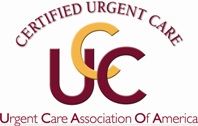Cuts/Lacerations
Cut/Laceration Treatment
in Newport Beach, CA
A cut refers to a wound with separation of connective tissue, usually caused by a sharp object. A laceration implies a jagged wound usually caused by blunt trauma; however, cuts and lacerations are essentially the same condition.
Symptoms
A cut is one of the easiest medical conditions to diagnose; as it describes an open wound in the skin. These are some of the most common injuries. The most obvious symptoms of a cut or laceration are bleeding, an obvious break or gap in the skin, and pain surrounding the injury.
Who is at risk?
Anyone is at risk for a cut or laceration.
Treatment for Cuts/Lacerations:
- Apply pressure with a clean cloth to stop the bleeding
- Clean the wound with water
- To prevent infection, use an antibiotic ointment
- Bandage the wound to keep it clean and prevent it from re-opening
- Watch for swelling and redness and other signs of infection
- In some cases, you may want to get a tetanus booster
When should I see a doctor?
- You should consult your physician as to whether or not a tetanus booster will be necessary.
- If you cannot stop the bleeding from the wound, seek medical attention.
- If the wound edges are separated and gaping.
- If an object or debris is embedded in the cut.
- If the wound shows signs of infection such as warmth and redness in the area.
- If the wound was caused by a bite from a human or animal.
Treatment for cuts and lacerations is available now at OnPoint Urgent Care in Aurora, CO.
For more information on cuts and lacerations, see the following websites:
Information on Wounds - Medline Plus (NIH)
Articles on Cuts, Lacerations, Abrasions, and Bruises - from NOAH (New York Online Access to Health)
Cuts, Scrapes and Stitches: Caring for Wounds - from FamilyDoctor.org
Disclaimer: The links above are to sites independent of OnPointUrgentCare.com. The pages will open in a new browser window. The information provided is for educational purposes only, and is not a substitute for professional medical advice, diagnosis, or treatment. If you have or suspect you may have a health problem, you should consult your doctor. Always follow your doctor’s recommendations regarding your specific medical questions, treatments, therapies, and other needs.



